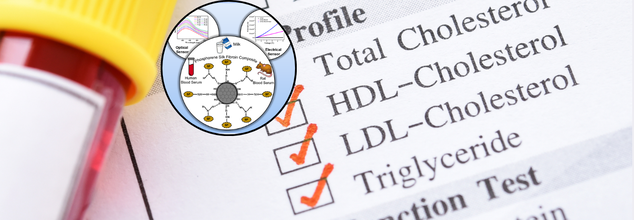- Health Conditions A-Z
- Health & Wellness
- Nutrition
- Fitness
- Health News
- Ayurveda
- Videos
- Medicine A-Z
- Parenting
- Web Stories

Credits: Canva
Breakthrough in Schizophrenia Treatment: FDA Approves Cobenfy
In a significant medical breakthrough, the U.S. Food and Drug Administration (FDA) has approved a new treatment for schizophrenia. Cobenfy, developed by Karuna Therapeutics and later acquired by Bristol Myers Squibb, represents the first new class of treatment for the disorder in nearly three decades.
A Novel Approach to Targeting Schizophrenia
Unlike existing schizophrenia medications, which primarily target dopamine receptors, Cobenfy operates through a novel mechanism, regulating brain pathways to reduce dopamine levels and alleviate symptoms. This new approach has generated excitement and hope among both doctors and patients.
Addressing the Limitations of Existing Treatments
Schizophrenia is a complex mental health disorder characterized by hallucinations, delusions, and disordered thoughts. While existing antipsychotics can help manage symptoms, they often come with significant drawbacks, such as weight gain, which can increase the risk of heart disease and premature death. Additionally, many patients stop using these medications due to side effects like sluggishness and lack of motivation.
Cobenfy: A Promising New Option
Cobenfy offers a potential solution to these challenges. By indirectly affecting dopamine levels through a different neurotransmitter, acetylcholine, researchers hope it can address some of the most challenging symptoms of schizophrenia, such as lack of motivation and inability to experience pleasure.
Availability and Cost
The FDA has approved Cobenfy as a monotherapy, meaning it is intended to be taken on its own, without other medications. However, further research is needed to understand how it interacts with existing treatments and whether combining it with them would offer any additional benefits or risks.
One of the most promising aspects of Cobenfy is its side effect profile. Unlike traditional dopamine-based therapies, the side effects reported in trials were mostly mild to moderate, such as nausea and gastrointestinal discomfort, which tended to subside over time. While there are warnings related to urinary retention, increased heart rate, and facial swelling in rare cases, the medication is not recommended for people with a history of liver or kidney disorders.
Bristol Myers Squibb is continuing to investigate Cobenfy’s long-term effects and how dosage adjustments can be made as patients' symptoms change. The drug's success in treating schizophrenia may open doors to its use in other conditions as well.
Cobenfy is expected to be available in the U.S. by late October. Bristol Myers Squibb estimates the wholesale price for a month’s supply will be $1,850. However, the actual cost for patients may be lower depending on their insurance coverage. The company estimates that 80% of people with schizophrenia in the U.S. have coverage through Medicare or Medicaid, potentially making the treatment more accessible to a broader range of patients.

Credits: Canva
Novavax Says FDA Approval Back on Track for Its COVID Vaccine
Novovax, the maker of the only protein-based COVID-19 vaccine available in the US announced that its shot is on track for full approval from the US Food and Drug Administration (FDA). It is an important development for the company. It has sent its stock soaring up to 21% on Wednesday morning for trading. It is said that this will also ease the fears of political interference that may have caused delay in the process.
Vaccine For Emergency Use Only
While the other mRNA vaccines from Pfizer and Moderna have received full FDA approval for specific age groups, Novovax's vaccine still awaits the approval. It is only authorized for emergency use.
The emergency use authorization or the EUA allows vaccines to be distributed during public health emergencies. However, once the emergency ends, the FDA can remove them from the market unless full approval is granted.
Why Did The Delay Happen?
The FDA originally planned to approve Novovax's vaccine by April 1. However, as per the inside sources, the process was paused at the direction of Dr Sara Brenner, the FDA's acting commissioner. The delay has also raised concerns, especially after Dr Peter Marks, the FDA's longtime vaccine chief, reportedly left his post due to disagreements with the Health Secretary Robert F Kennedy Jr, who is a known vaccine skeptic.
What Makes Him A Vaccine Skeptic?
In the past, RFK Jr. has worked closely with many anti-vaccine activists who work for his nonprofit group Children's Health Defense. While in his recent speech, he said that he has "never been anti-vax and have never told the public to avoid vaccination", his track record shows otherwise.
In a podcast interview, he said, "There is no vaccine that is safe and effective" and told FOX News that he still believes in the now long-debunked idea that vaccines can cause autism. In another 2021 podcast, he urged people to "resist" CDC guidelines on getting their kids vaccinated. "I see somebody on a hiking trail carrying a little baby and I say to him, better not get them vaccinated," he said.
His non-profit also led an anti-vax campaign sticker and he appeared next on the screen to a sticker that read: "If you are not an anti-vaxxer you are not paying attention," reports AP.
What Does The Vaccine Need For Approval?
The FDA recently asked Novavax to outline a plan to collect additional clinical data from people who have received the vaccine. Novavax says it is “engaging with the FDA expeditiously” and hopes to secure full approval as soon as possible. Full FDA approval is considered the gold standard, as it reflects a higher level of scrutiny and confidence in a product’s safety and effectiveness.
How Is This Vaccine Different From Others?
The COVID-19 vaccines that are currently available in the US teach the immune system to recognize the virus' spike protein, which is its outer coating. the Pfizer and Moderna's mRNA vaccine deliver genetic instructions that help the body create a temporary version of spike protein that trigger an immune response. In contrast, the Novovax's shot contains lab-grown copies of the spike protein itself, which are then combined with a substance that boosts the immune response.
This traditional approach—called a protein-based vaccine—has been used for decades in vaccines for diseases like hepatitis B and shingles. For people who are hesitant about mRNA vaccines, Novavax offers an alternative that uses a well-established method.

Credits: Canva
FDA Approves Dupixent For Chronic Spontaneous Urticaria In Adolescents And Adults
The US Food and Drug Administration (FDA) has granted approval to Dupixent or dupilumab for the treatment of chronic spontaneous urticaria (CSU) in adults and adolescents who are aged 12 years or are older. The approval caters to those who would have to continue to experience symptoms despite being on histmamine-1 (H1) antihistamine therapy. These are medications that block the effects of histamine on H1 receptors and are primarily used to treat allergies or allergic reactions.
What is Dupixent?
It is a biologic medication which targets specific pathways in the immune system. It is a monoclonal antibody, which is designed to inhibit the signaling of two key proteins, namely: interleukin-4 (IL-4) and interleukin-13 (IL-13). These two play a central role in type 2 inflammation, which is believed to contribute to a variety of allergic and inflammatory conditions. It is also approved for other conditions like atopic dermatitis, asthma, and chronic rhinosinusitis with nasal polyposis.
What is Chronic Spontaneous Urticaria?
As per the 2017 study published in Canadian Medical Association Journal, titled Chronic spontaneous urticaria, the condition is defined by the presence of hives daily or almost for at lease six weeks. The study also mentions that the condition mostly affects the working population and may have a substantial impact on quality of life.
As per the American College of Allergy, Asthma & Immunology, it affects about 20% of people at some time during their lives. It can also be triggered by many substances or situations and usually starts as an itchy patch of skin that turns into swollen red welts.
Rarely, cases of hives last more than six weeks and could end up staying for up to 5 years. This condition is known as chronic spontaneous urticaria or idiopathic urticaria. It can affect 1.4% of the general population and is seen in women twice as commonly as men.
For many individuals, the condition is both physically uncomfortable and emotionally distressing, often interfering with sleep, daily activities, and overall quality of life. In some patients, standard antihistamines fail to control the symptoms, leaving them in need of more effective treatment options.
How Was Dupixent Approved?
The FDA has based its decision on the results of two phase 3 clinical trials that studied the drug ass an add-on to the standard antihistamine therapy. The trials also included patients who had not previously been treated with biologic therapies and who continued to show symptoms despite being on antihistamines.
In both studies, Dupixent met its primary and key secondary endpoints. Patients receiving the medication showed a significant reduction in the severity of itching and urticaria activity after 24 weeks, compared to those who received placebo plus antihistamines. Additionally, those on Dupixent were more likely to achieve well-controlled disease or a complete response by the end of the study period. The safety profile observed in these trials was consistent with what has already been documented in other approved uses of Dupixent.
The approval of Dupixent for CSU represents a significant advancement for patients and healthcare providers. It offers new hope for those who have been living with poorly controlled symptoms, enhancing their ability to manage the condition more effectively and improve overall quality of life.

Scientist Reveal New Optical Sensor Can Spot High Cholesterol And Predict Disease Risk Instantly
A future where heart attacks, strokes, and even cancer might be predictable is coming near—not only cured—thanks to a small, new eco-friendly sensor that can detect harmful levels of cholesterol in real-time. Scientists in India have created a revolutionizing optical sensor that can immediately identify high cholesterol, which could change the way we check for heart disease around the world.
At the core of this innovation is a unique biosensing platform that's not just extremely sensitive and affordable but also eco-friendly. Created by scientists at the Institute of Advanced Study in Science and Technology (IASST), Guwahati, in India this next-generation optical sensing tool is constructed using silk fiber functionalized with phosphorene quantum dots. Their work, reported in the highly regarded Nanoscale journal by the Royal Society of Chemistry, breaks new ground for non-invasive, real-time disease monitoring.
Why Early Detection of Cholesterol is Important to Overall Health?
Elevated cholesterol levels, particularly high LDL (low-density lipoprotein) or "bad" cholesterol, are frequently associated with silent but lethal diseases such as atherosclerosis, myocardial infarction, hypertension, venous thrombosis, and even some cancers. But the greatest concern? Most individuals never realize they're at risk until it's too late.
Cholesterol serves a double function in human physiology. It is required for the manufacture of vitamin D, bile acids, and steroid hormones and for the preservation of blood and nerve cell integrity. But too much—especially increased LDL (low-density lipoprotein, or "bad") and decreased HDL (high-density lipoprotein, or "good") cholesterol—can cause arteries to become clogged with plaque, blocking the flow of blood and causing life-threatening events.
That's why it is essential to detect these issues early on. And this new optical sensor might prove a breakthrough in the global battle against chronic illnesses by detecting risk signs before symptoms develop.
What makes this device a scientific milestone is the integration of materials and techniques that are innovative and environmentally friendly. The scientists employed silk fiber as the substrate and functionalized it with phosphorene quantum dots, which are renowned for their superior electrical and optical properties.
The sensor was also incorporated into a cellulose nitrate membrane to create an electrical sensing platform that can detect trace amounts of cholesterol—even below the normal detection limit. That's correct: this device can detect cholesterol changes before they reach clinical levels, making it perfect for regular health monitoring and preventive medicine.
This device produces no electronic waste, providing a green alternative to traditional diagnostic technologies.
How Does the Device Works?
In contrast to most experimental laboratory creations that fail to translate to real-world use, this device is highly compatible with real biological samples. It was able to detect cholesterol levels in human blood serum, rat blood, and even milk—showing its strength and versatility across mediums.
Such reliability makes it extremely versatile for application in point-of-care (POC) environments, possibly in clinics, pharmacies, or even at home. That translates to no more complicated lab tests or weeks of waiting for results.
One of the main causes of abnormal cholesterol is familial hypercholesterolemia, a genetic condition in which the liver has difficulty breaking down cholesterol. This makes regular checks even more crucial, particularly for those with a family history of heart disease, says the British Heart Foundation.
Obesity, inflammation, smoking, alcohol consumption, and sedentary lifestyles all increase LDL levels while simultaneously reducing protective HDL cholesterol. In many cases, the symptoms remain invisible—making it a ticking time bomb inside the body.
Visible signs such as deposits of fat beneath the skin (xanthomas), yellowish spots on or near the eyelids (xanthelasmas), or white circles around the iris (corneal arcus) may appear in rare cases. But for many individuals, high cholesterol has no warning signals.
Can Lifestyle Changes Replace Statins?
Though statins, drugs that inhibit the liver production of cholesterol—are common and have been shown to be effective, they're not the only solution. Lifestyle modification continues to be the cornerstone. Physicians suggest:
Physical activity on a daily basis: A minimum of 30 minutes to increase HDL and decrease LDL.
Changes in diet: Increased fiber, reduced saturated fats, and decreased processed foods.
Smoking and alcohol avoidance: Both are bad habits that make LDL worse and are detrimental to heart health.
The objective isn't merely treatment but prevention, and that is where early diagnosis using devices like this optical sensor comes into play.
This emerging optical sensor, capable of detecting cholesterol, is more than an academic achievement—it's a sea change. It signals a new world where your health is cared for proactively, sustainably, and customarily. Beyond its current ability to be handheld, this equipment may be designed into wearable devices, home health test kits, or even phones that are smarter with health attachments.
© 2024 Bennett, Coleman & Company Limited

